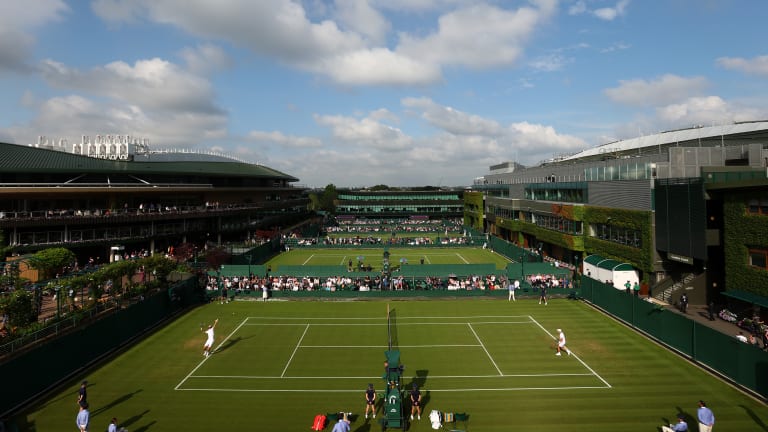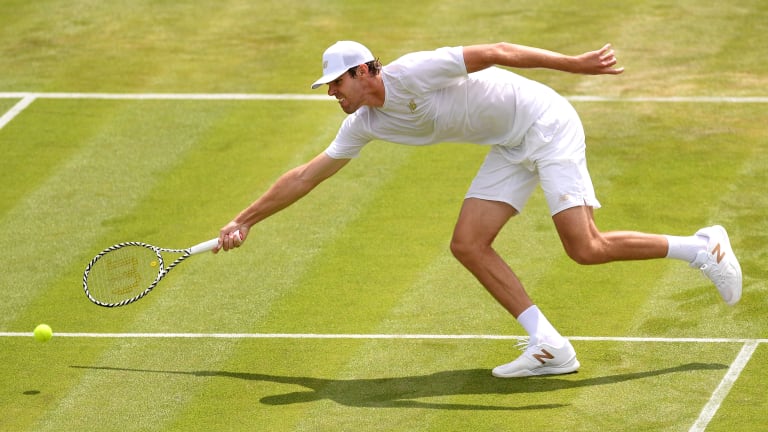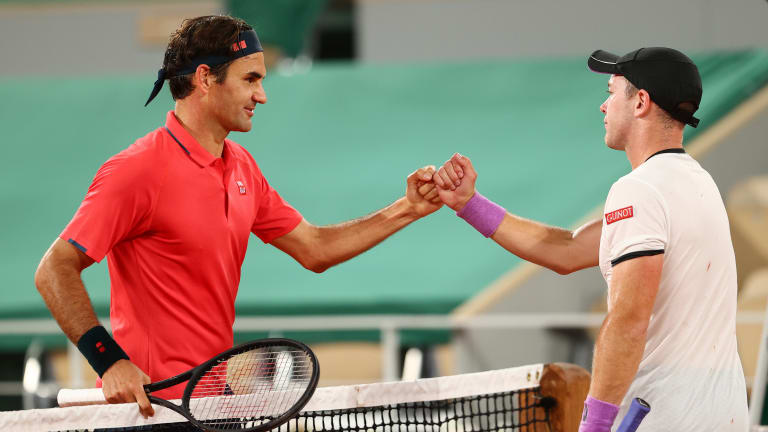Wimbledon will always be the tournament we think of when John Isner’s name is mentioned, for two very good reasons. He won a 183-game match there, and he reached the semifinals there (that semifinal clocked in at just 99 total games). But outside of those two incredible and indeterminable highlights, Isner’s record at Wimbledon is lackluster. Take away his 2018 semifinal run, and he’s only 11-10 at the All England Club, with no fourth-round appearances.
Maybe Isner, who might own the most devastating shot in tennis history—his serve, of course—can buck the trend this year; he opens tomorrow against Yoshihito Nishioka. But his history at Wimbledon was on my mind Monday, when another star server, Reilly Opelka, took the court against Dominik Koepfer. Just one spot below his career-high ranking, the 23-year-old, 32nd-ranked Opelka had played well enough to earn a seed in SW19, and found himself in a relatively soft quarter of the draw—one that also no longer featured its top seed, Stefanos Tsitsipas. Although Opelka lost his only grass-court singles match leading up to Wimbledon, his play on clay (a semifinal in Rome, and a third-round showing at Roland Garros) and consistent upward trend was noteworthy. Could Opelka—a junior Wimbledon champion six years ago—turn into a giant-sized men’s sleeper?
As we were reminded on Monday, while a player can choose how he or she plays, and refine that game as much as possible, they can’t choose two things at the game’s upper-most level: the surface on which they compete, and the person across the net.


